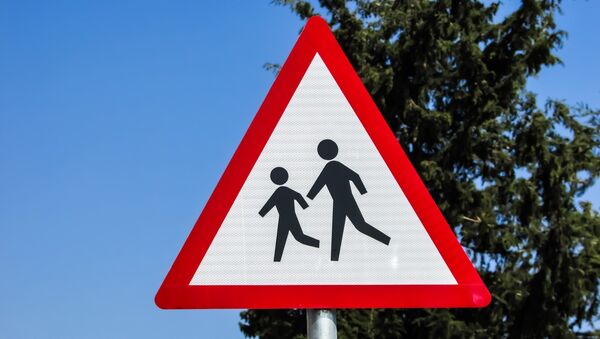As part of its upcoming traffic reform, Finland plans to update all traffic signs. The purpose of the innovations, which may enter into force as early as next year, is to make the signs clearer and more conspicuous. Among other things, however, the gender-specific figures on the signs will be replaced by depersonalized and asexual figures.
According to Transport Department expert Jukka Hopeavuori, though, this is not due to an overwhelming desire to achieve gender neutrality.
Liikennemerkit uudistuvat. Jatkossa pihakadun lapset eivät enää kenkäise palloa täysillä päin ohikulkijaa. https://t.co/5jzeZRxBo3 pic.twitter.com/XxkcBqbz6o
— Kaupunkiympäristö (@HelsinkiKymp) October 18, 2017
"It does not really matter who is depicted on the sign, man or woman. The important thing is that the image clearly conveys the action," Jukka Hopeavuori explained Finnish national broadcaster Yle.
"The idea of the new road signs is that they should be simple, illustrative and follow international guidelines better than the old ones," Tuomas Österman, told the Finnish newspaper Hufvudstadsbladet, explaining that gender neutrality was a side effect of the simplification process.
In addition to unisex figures, the new signs will sport new models of cars, tractors, motorcycles and mopeds. The new bicycle symbol proved to be particularly divisive among the Finnish public, as many Finnish users claimed it featured a high "male" frame.
Jos uudet liikennemerkit ovat mielestäsi sukupuolineutraaleja…
— Taru Luojola (@Stooby_pls) October 18, 2017
EXPLAIN THIS!
;) pic.twitter.com/Vi6Cc5H3ia
Innovations will be applied to street signs showing animals. Street signs featuring deer and moose will thus be replenished with signs featuring the roe, copied from the corresponding Swedish sign.
Finally, signs such as "Movement of horse-drawn carts prohibited" and "Traffic lane for horse-drawn carts" will also be slightly modified. While the Finnish traffic bosses had no qualms about the horse pictogram, the rider will be supplemented with a helmet.
Lakiuudistuksen tärkein pointti. Saamme hevoselle neljännen jalan! #liikennemerkit #detaljit pic.twitter.com/7GZYja3lP0
— Anssi Hietamaa (@AHietamaa) October 19, 2017
Meanwhile, the innovations have caused a considerable stir on Finnish social media, with many users arguing the new signs were boring and lacked the "human touch."
"Tärkeää on se, että merkissä vaikkapa kävellään". Niin… Mitä kertoo merkki jossa hahmo joraa valokeilassa pianon päällä? #liikennemerkit pic.twitter.com/oKj820qXeP
— Jari Ketola (@ketola) October 18, 2017
"I was hopeful to see postscript that this is an April Fool's joke. Unfortunately, I did not find it," a user wrote in the comments section on the Finnish daily Ilta-Sanomat's page.
"Again, public money gets wasted. How much is this game going to cost us? The situation on the roads is unlikely to improve anyway," another user wrote.
"Just you wait until someone discovers that the asphalt is black and the traffic lane markings are white. Then the racism card will be played," a Hufvudstadsbladet reader remarked sarcastically.
In 2016, an unusual parking sign near a Lidl food store allegedly depicting a single mother with two children made national headlines in Finland, after a man wondered whether it was okay for the father of the family to park there. Lidl communications department answered that the designated parking places were open for all family buyers regardless of their gender, Ilta-Sanomat reported.
"It's a shame, but it seems like fathers really should look for another parking spot," a user quipped.




